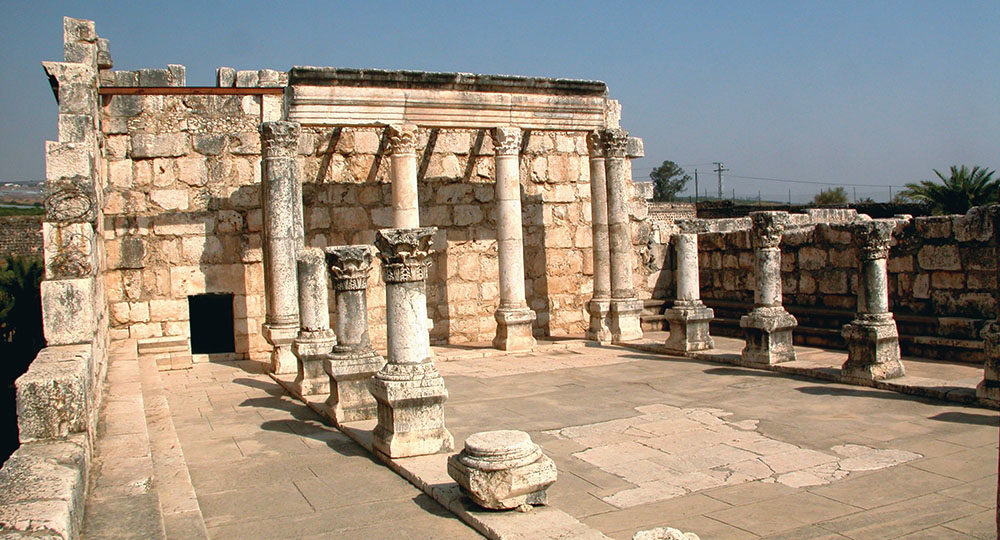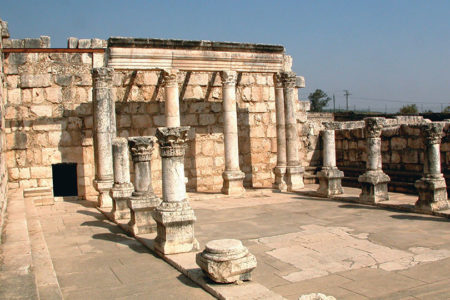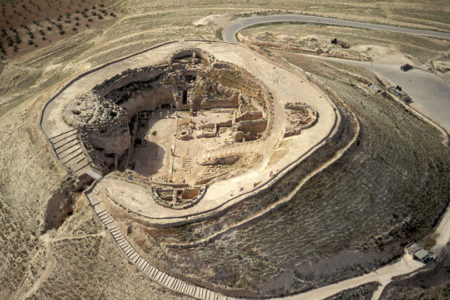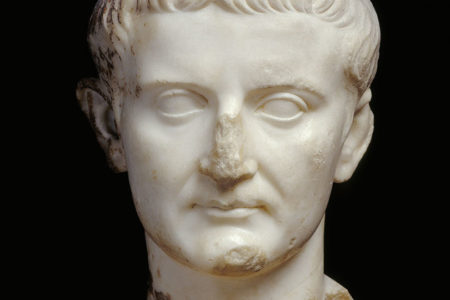Great Cities of Jesus’ Day
There are endless reasons, if you have never been there, to plant your feet squarely on the land of Israel at least once in your life. With Bible in hand, you can walk through four ancient cities that bear particular witness to the miraculous presence and power of Jesus the Messiah. Two of them still survive as thriving centers of modern life. The others remain only as breathtaking archaeological artifacts. But they all have one thing in common: They tell a story of people impacted by the Messiah, if we take the time to listen.
The City of Convergence
At the northwestern tip of the Sea of Galilee lie the ruins of Capernaum. With the blue waters of the Galilee stretching out in the background, rimmed by the hills that surround it, this peaceful-looking resort area may seem an odd choice for the Lord’s first base of ministry; but choose it He did, shortly after it was learned that John the Baptist had been arrested (Mt. 4:12–13). And there are at least two good reasons why Jesus picked Capernaum. One had to do with people; the other, with placement.
Capernaum was home to His future disciples Peter and Andrew (Mk. 1:29); it was where Jesus called several fishermen and a tax collector into service for Him (Mt. 4:18; 9:9). But the city also had a strategic importance. Capernaum was a bustling fishing town and commercial center. It housed a high-ranking government official (Jn. 4:46) and a Roman centurion with a detachment of 100 soldiers serving under him (Mt. 8: 5–13).
It also was intersected by the all-important convergence of two main highways: the Great Trunk Road to Damascus, which in turn intersected the King’s Highway that followed the mountain ranges east of the Jordan, ending at the Gulf of Aqaba. Thus Jesus’ powerful message and the stories of His stunning miracles of healing in the Galilee could be carried quickly to major cities through these established trade routes.
Archaeologists have reconstructed what Capernaum may have looked like in Jesus’ time. Numerous stone piers jutted into the harbor. Houses and shops crammed the shoreline. The largest and most prominent structure was probably the synagogue. Today, nestled in a quiet grove of trees, ancient pillars and partial walls from a second-century synagogue now stand exactly over that place of worship that Jesus had visited a century earlier.
I have had the opportunity to stand in these ruins and preach a message from Mark 1:21–28. It is an amazing gospel story. Jesus entered the synagogue and began to teach. He astounded His listeners by preaching directly, powerfully, and on His own authority—not at all like the scribes who were fond of endlessly citing other religious sources. Suddenly, pandemonium broke out. Loud cries disrupted the worship service. They were emanating from a demon-possessed man in the crowd. The demons shrieked out against the Son of God, for they knew He had come to vanquish the Devil and conquer death. But Jesus calmly rebuked the demons and fully and immediately healed the spiritually tormented, possessed man. When the incident was over, the worshipers stood amazed, debating with one another. Not only had Jesus brought an astounding new word, but He had also performed a divinely miraculous work.
The City of Completion
When Jesus announced His decision to return to Jerusalem for Passover, His disciples must have shook their heads. Conspiracies to attack Him were rumored everywhere, and Jerusalem in particular would have presented a grave risk, since it was the epicenter of the religious leaders who were most offended by His seemingly audacious claims.
The Bible tells us that the disciples were afraid as He set His face steadfastly toward Jerusalem (Mk. 10:32). Jesus gave the disciples a brutally honest prediction of what lay in store for Him: illegal arrest, torture, and cruel execution. But He also boldly stated that the tomb would not hold Him and that on “the third day He will rise again” (v. 34). In that city, His mission would be completed.
Jesus’ ministry of sacrifice for our sins was finished on the cross at Golgotha—the place of the skull—on a hill just beyond the outskirts of ancient Jerusalem. His death was the ultimate act of healing for everyone—past, present, and future—who accepts His shed blood as the atonement for sin, confesses Him as the Son of God, and receives Him as Savior.
After Jesus’ burial, slightly before the break of that monumental day, a shocking yet unmistakable sound echoed out: the low, rumbling, grinding sounds of the massive tomb-closing stone being rolled away from the entrance of Jesus’ grave. Against the rantings of his political enemies; against the nay-saying of the religious establishment that had railed against His title as King; indeed, against all human expectation and all the logic of human experience, He had risen. It all happened; and it happened exactly as He said.
There are so many places in Jerusalem that resonate with the voices and sounds of Jesus’ heaven-sent life and ministry: the cheering and singing celebration from the crowds as He rode triumphantly into Jerusalem—many of them having just heard the electrifying news that He had raised Lazarus from the grave; the yelling from onlookers as Pontius Pilate, in or around the area of the Antonia Fortress, illegally abdicated his judicial responsibility to a screaming mob; the cries from the passersby and shopkeepers and the warnings from the guards down the winding, narrow Via Dolorosa as the Lord Jesus, on the way to His crucifixion, was made to shoulder His heavy cross after a vicious scourging.
But there is also a quieter place in Jerusalem where Jesus’ healing power was vividly illustrated. Archaeologists have unearthed what convincingly seems to have been the pool of Siloam where the Lord gave sight to a man who was blind from birth (Jn. 9:1–11). Hershel Shanks, editor of Biblical Archaeology Review, in an article in the September/October 2005 issue, laid out the amazing excavation. The pool (likely a miqveh, a Jewish ritual bath) had multiple sets of steps leading down to it. These steps have now been uncovered. We are told that bathers would have had an expansive view of the Kidron Valley in the background.
The healing story associated with the pool of Siloam is one of the most elaborately described in Scripture. The blind man had been a well-known beggar in the Temple area. One day Jesus encountered him, spat on the ground, mixed the spittle with clay, and applied it to the man’s eyes. Then He told the man to wash his eyes in the pool. When the man did so, he could see.
But the Pharisees were outraged, as the act had been done on the Sabbath. After being grilled extensively about his healing, the beggar wondered aloud (in an exquisite display of humor) whether the Pharisees were asking so many questions because they might want to be Jesus’ disciples too! But his naiveté only further enraged Jesus’ accusers, and the now-seeing beggar was tossed off the Temple grounds.
Jesus went looking for the man and found him in a corner of the city not far from the Temple. When the beggar finally beheld the Lord, he uttered a heartfelt confession of faith in the Son of God: “‘Lord, I believe!’ and he worshiped Him” (v. 38).
The City of Correction
South of modern Tel Aviv, along the coast of the Mediterranean Sea, is the city of Jaffa (Joppa). Joppa was where Jonah, God’s resistant prophet, had shipped out in an attempt to escape the directive to preach repentance to the sin-sick city-state of Nineveh.
But after a raging storm, a near-drowning, and three days inside the belly of a big fish, Jonah experienced an attitude adjustment. After being spewed out onto dry land, he made his way to Nineveh, preached God’s message, and witnessed a sizable civilization rescued from immediate destruction.
Today Joppa is a beautiful little gem of an artisan community with commanding views of the sea. It still functions as a harbor. Back in the first century, the apostle Peter traveled there and experienced a major attitude adjustment of his own (Acts 10:1–48).
North of Joppa was the rival seaport of Caesarea, the home of a devout centurion named Cornelius. Cornelius received a vision from God to send messengers to locate Peter, who had been staying in Joppa with a tanner named Simon. Obedient to the Lord, Cornelius ordered his men to track Peter down. By the time they knocked on Peter’s door in Joppa, the apostle was finishing a vision of his own. God’s timing is always perfect. On the rooftop of Simon the tanner’s house, God had shown Peter that “what God has cleansed you must not call common [unholy]” (v. 15).
So Peter, a Jewish follower of Jesus the Messiah, and several fellow believers traveled up to Caesarea to the home of the Roman centurion (an act of faith in itself—though the Holy Spirit had already assured Peter that this was God’s doing). By then Peter had finally gotten the point, and he declared to the Gentile (and therefore technically “unclean”) centurion,
You know how unlawful it is for a Jewish man to keep company with or go to one of another nation. But God has shown me that I should not call any man common or unclean. But in every nation whoever fears Him and works righteousness is accepted by Him (vv. 28, 35).
Peter preached the gospel to Cornelius, and the Roman soldier and others gathered with him embraced Christ by faith—even receiving the indwelling of the Holy Spirit as the believing Jews had done at Pentecost.
Thus the stage was set for the great missionary outreach from the Jewish to the Gentile world.
The City of Confession
Caesarea was built by Herod the Great to honor Caesar Augustus, his political patron. It took him 12 years to construct. By the standards of the day, it was a feat of architectural and engineering genius and served as the Roman capital of Judea. It had a magnificent marketplace, a great port on the Mediterranean, government buildings, a Roman circus for chariot races, and a huge amphitheater that is splendidly preserved.
Visitors today can roam the mammoth, stone-terraced theater and get a feel for what the apostle Paul might have encountered. Arrested and dragged around in chains because of his preaching, Paul was finally released and granted a hearing before Felix, the Roman governor in Caesarea (Acts. 23:33—24:27).
In his court hearing, Paul was persecuted by a well-known lawyer named Tertullus, who apparently had been hired to represent Ananias and the Sanhedrin from Jerusalem. They were fed up with Paul’s gospel preaching. As some trial lawyers are wont to do, Tertullus began his opening statement by heaping flattery on the tribunal (24:2–3). Then he went for the jugular. I can imagine his powerful oratory as he accused Paul of provoking civil unrest and attempting to “profane the temple,” pointing out that he was a “ringleader of the sect of the Nazarenes” (vv. 5–6).
Then Paul spoke. He was probably more subdued, less theatrical, and (by the text of Scripture) much more logical (vv. 10–21). Paul’s defense was twofold: (1) that the accusations of fomenting a riot (a serious charge in ancient Rome) failed for total lack of proof and (2) that the real gist of the matter was theological, not legal:
I have hope in God…that there will be a resurrection of the dead, both of the just and the unjust. I cried out, standing among them, “Concerning the resurrection of the dead [and chiefly the resurrection of Jesus] I am being judged by you this day” (vv. 15, 21).
Felix, who apparently had some understanding of The Way (the original label for followers of the Messiah), decided to delay the matter indefinitely. Or, as a court clerk might say today, Paul’s case was “placed at the foot of the docket.”
That, of course, was an understatement. Paul would languish for more than two years in the jail in Caesarea, while outside, Romans and visiting merchants dined lavishly, attended the Roman games, and enjoyed the opulence of this well-healed commercial center (v. 27).
Later, when Festus replaced Felix, Paul again confessed his innocence and professed his faith in Jesus the Christ—but with an additional caveat: this time he would appeal to Caesar (25:11–12). Thus began Paul’s harrowing, forced missionary journey to Rome. As he went, he continued to carry the healing message of Jesus as Savior, taking it ultimately throughout the Gentile world.
Four ancient cities—but one King of kings and Lord of lords. As we travel through our own cities, may we spread the amazing message of the Messiah, born in a manger, who will someday return to rule the world.







